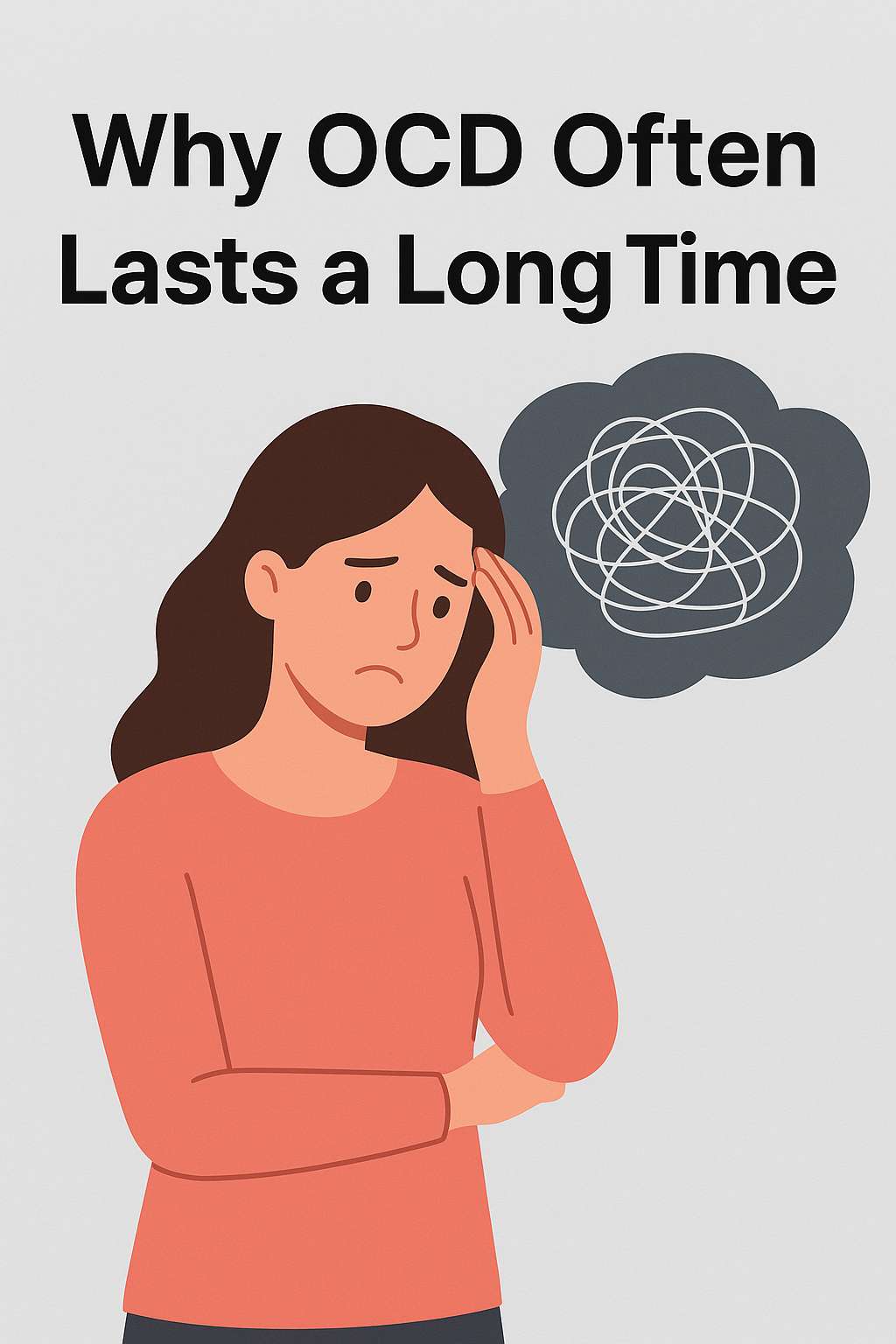
Why OCD Often Lasts a Long Time — A Clinician’s Guide to what keeps it going
Why OCD Often Lasts a Long Time — A Clinician’s Guide to what keeps it going
Obsessive-compulsive disorder (OCD) can feel like a stuck record: the same intrusive thought, the same urge to check or wash, the same brief relief that pulls you back in. For many people OCD is not a short episode but a long, often waxing-and-waning course. Why does it persist? Below I unpack, from a clinical perspective, the main reasons OCD becomes long-standing — and what clinicians and families can do about it.
1. The brain circuits that don’t “let go”
OCD is more than just worry or habit; it’s rooted in brain circuit dysfunction. Research points to hyperactivity in cortico-striato-thalamo-cortical (CSTC) loops — networks that govern error signals, action selection and habit formation. When these circuits misfire, the brain keeps flagging that “something is wrong,” producing intrusive doubts and pushing for ritualised responses. Over time that repeated loop becomes easier to run than to stop, which helps explain the persistence. PMC+1
2. The powerful learning loop of relief
The psychology is straightforward but potent: compulsions reliably reduce anxiety in the short term. That immediate relief is negative reinforcement — the behaviour is rewarded by the removal of discomfort — so the compulsion becomes more likely to recur. Initially, rituals are goal-directed (to reduce anxiety), but repeated reinforcement pushes them into habit systems that are far more resistant to change. That transition from anxious coping to automatic habit is a major reason symptoms become entrenched. ScienceDirect+1
3. Delay and quality of treatment matter
Many people with OCD wait years before receiving a correct diagnosis or receiving evidence-based treatment. A longer duration of untreated illness (DUI) is associated with poorer response and more severe long-term symptoms. Even when treatment begins, it must be the right kind and dose: CBT with exposure and response prevention (ERP) and higher-dose/longer trials of SSRIs are the gold standards. Partial, short, or inconsistent treatment often leaves residual symptoms that rekindle the disorder later. PMC+1
4. Insight, motivation and treatment engagement
Insight — how much a person recognises their obsessions and compulsions as excessive or unreasonable — varies widely. Poorer insight predicts worse outcomes because people may not engage fully in ERP or may refuse exposure due to fear. Motivation, therapeutic alliance, and adherence to treatment essentials (homework, exposures, medication continuity) are all practical, mutable factors that determine whether someone recovers or remains symptomatic. PMC+1
5. Comorbidity and life-context amplify risk
OCD rarely arrives alone. Depression, other anxiety disorders, substance use, tic disorders, and certain personality features commonly co-occur and complicate treatment. Depressive symptoms sap energy for exposure work; substance misuse can blunt treatment effects; and ongoing stressors such as interpersonal conflict or trauma increase relapse risk. Addressing these coexisting problems is essential for durable recovery. Wiley Online Library+1
6. Biological heterogeneity and treatment resistance
Not everyone’s OCD is driven by the exact same biology. While serotonin systems are implicated (hence SSRI benefit), dopamine, glutamate and other systems can be involved — and some patients have circuit patterns that respond poorly to first-line approaches. That’s why a minority are classified as treatment-resistant and may need augmentation (antipsychotics, clomipramine), novel pharmacology, or neuromodulation (rTMS, DBS) in specialist centres. This biological diversity explains why some people respond rapidly while others struggle for years. NCBI+1
7. Predictors clinicians should watch for
Certain features predict a more chronic course: earlier age of onset, greater baseline severity, poor insight, longer untreated duration, and psychiatric comorbidity (especially depression). Patients with these risk markers benefit from early, intensive, and closely monitored care — not minimal contact or “wait and watch.” ScienceDirect+1
8. What helps prevent chronicity — practical clinical steps
-
Screen early and refer fast. Reducing the time between symptom onset and evidence-based treatment matters. Primary care screening and psychoeducation for families are low-cost, high-yield moves. PMC
-
Deliver full-dose, structured ERP. Supervised exposures with clear response prevention and graded hierarchy are the treatment’s core. Consistency beats quick fixes. ScienceDirect
-
Treat comorbidity aggressively. Don’t let depression or substance use remain unmanaged — they undermine ERP. Wiley Online Library
-
Boost engagement and insight. Motivational interviewing, family-based CBT strategies, and repeated psychoeducation improve adherence. Track homework, exposures completed, and medication continuity. BioMed Central
-
Know when to escalate. For non-responders, consider evidence-based augmentation, specialist pharmacology, or referral for neuromodulation. Early specialist input shortens the path out of chronicity for many. Frontiers+1
9. A message for patients and families
Chronic doesn’t mean hopeless. Many people improve substantially with the right combination of therapy, medication and support. But recovery often takes time, persistence, and the right intensity of care. Families that understand the learning dynamics of OCD (how relief strengthens rituals) and that support structured treatment — rather than accommodating rituals — make a huge difference.
OCD becomes long-standing because biology, learning, treatment gaps and life context conspire to keep the same loop running. The good news: each of these links is also a point of intervention. As clinicians, educators and families, if we act early, provide full-dose ERP, treat comorbidity and remain willing to escalate when needed, we can turn years of stuckness into a track toward lasting recovery.
